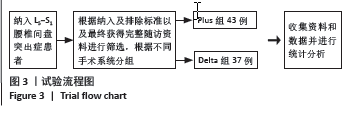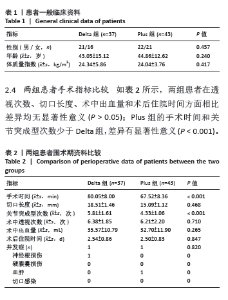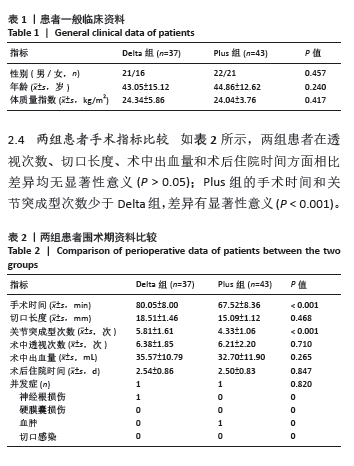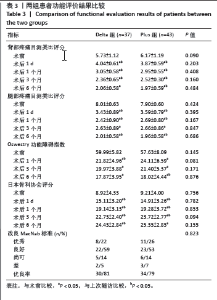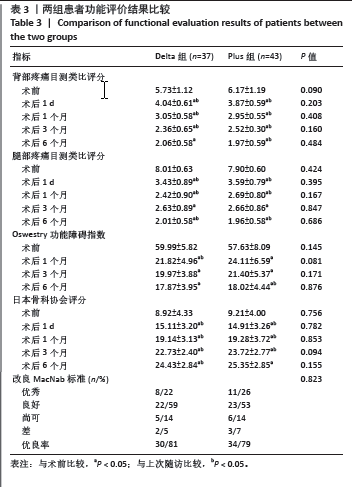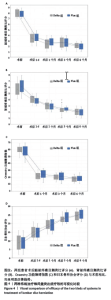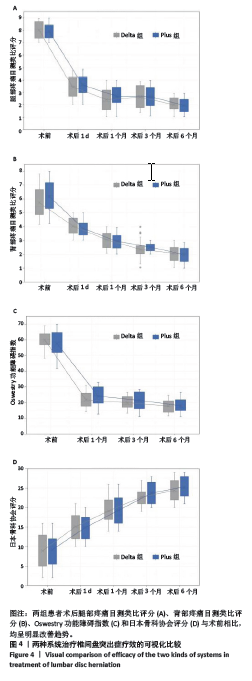[1] CHOI KC, KIM JS, RYU KS, et al. Percutaneous endoscopic lumbar discectomy for L5-S1 disc herniation: transforaminal versus interlaminar approach. Pain Physician. 2013;16(6):547-556.
[2] SHI R, WANG F, HONG X, et al. Comparison of percutaneous endoscopic lumbar discectomy versus microendoscopic discectomy for the treatment of lumbar disc herniation: a meta-analysis. Int Orthop. 2019; 43(4):923-937.
[3] AHN Y. Percutaneous endoscopic decompression for lumbar spinal stenosis. Expert Rev Med Devices. 2014;11(6):605-616.
[4] OERTEL JM, BURKHARDT BW. Full endoscopic treatment of dural tears in lumbar spine surgery. Eur Spine J. 2017;26(10):2496-2503.
[5] 赵忱东.大通道与双通道内镜技术治疗神经根型颈椎病早期临床疗效的回顾性分析[D].成都:成都体育学院,2023.
[6] 冯良恩.经皮椎间孔镜行腰椎管减压的技术演进[J].中外医学研究, 2023,21(6):163-166.
[7] HAN S, ZENG X, ZHU K, et al. Clinical Application of Large Channel Endoscopic Systems with Full Endoscopic Visualization Technique in Lumbar Central Spinal Stenosis: A Retrospective Cohort Study. Pain Ther. 2022;11(4):1309-1326.
[8] LI XC, ZHONG CF, DENG GB, et al. Full-Endoscopic Procedures Versus Traditional Discectomy Surgery for Discectomy: A Systematic Review and Meta-analysis of Current Global Clinical Trials. Pain Physician. 2016; 19(3):103-118.
[9] 高崇皓,李利军,马技.椎间孔成形技术在经皮椎间孔镜下治疗腰椎退行性疾病中应用的研究进展[J].中国脊柱脊髓杂志,2023, 33(4):353-357.
[10] HAGAN MJ, TELFEIAN AE, SASTRY R, et al. Awake transforaminal endoscopic lumbar facet cyst resection: technical note and case series. J Neurosurg Spine. 2022;37(6):843-850.
[11] 陈道裕,李进,俞涛,等.经皮腰椎全内镜下单侧入路双侧减压治疗单节段腰椎椎管狭窄症的临床疗效分析[J].中国骨与关节杂志, 2022,11(9):659-663.
[12] WU W, YANG S, DIAO W, et al. Analysis of clinical efficacy of endo-LIF in the treatment of single-segment lumbar degenerative diseases. J Clin Neurosci. 2020;71:51-57.
[13] 刘镠,李莹,吴从俊,等.经皮内镜下腰椎间融合技术研究进展[J].中国中医骨伤科杂志,2019,27(11):85-88.
[14] 赵东东,徐峰,熊承杰,等.iLESSYS Delta与显微内镜下腰椎椎间盘切除术治疗腰椎管狭窄的疗效比较[J].华南国防医学杂志,2020, 34(2):82-87.
[15] 丛志超,许德荣,周传利,等.两种可视化关节突成形技术治疗腰椎间盘突出症的早期临床疗效比较[J].中华骨与关节外科杂志, 2021,14(7):592-599+610.
[16] HAN S, ZENG X, ZHU K, et al. Clinical Application of Large Channel Endoscopic Systems with Full Endoscopic Visualization Technique in Lumbar Central Spinal Stenosis: A Retrospective Cohort Study. Pain Ther. 2022;11(4):1309-1326.
[17] 张晶,李忠海.重度脱垂型腰椎间盘突出症脊椎内镜治疗进展[J].中国微创外科杂志,2023,23(11):844-849.
[18] TSUTSUMIMOTO T, YUI M, UEHARA M, et al. A prospective study of the incidence and outcomes of incidental dural tears in microendoscopic lumbar decompressive surgery. Bone Joint J. 2014;96-b(5):641-645.
[19] MALHOTRA NR, SHAFFREY CI. Intraoperative electrophysiological monitoring in spine surgery. Spine (Phila Pa 1976). 2010;35(25): 2167-2179.
[20] 梁智林,海涌,杨晋才,等.经皮椎间孔镜治疗腰椎间盘突出症术后复发影响因素研究[J].中国骨与关节杂志,2020,9(1):5-10.
[21] PARKER SL, AMIN AG, FARBER SH, et al. Ability of electromyographic monitoring to determine the presence of malpositioned pedicle screws in the lumbosacral spine: analysis of 2450 consecutively placed screws. J Neurosurg Spine. 2011;15(2):130-135.
[22] ZHOU C, ZHANG G, PANCHAL RR, et al. Unique Complications of Percutaneous Endoscopic Lumbar Discectomy and Percutaneous Endoscopic Interlaminar Discectomy. Pain Physician. 2018;21(2): E105-E112.
[23] YIN S, DU H, YANG W, et al. Prevalence of Recurrent Herniation Following Percutaneous Endoscopic Lumbar Discectomy: A Meta-Analysis. Pain Physician. 2018;21(4):337-350.
[24] QUERFURTH HW, ARMS SW, LICHY CM, et al. Prediction of intracranial pressure from noninvasive transocular venous and arterial hemodynamic measurements: a pilot study. Neurocrit Care. 2004; 1(2):183-194.
[25] BOTHWELL SW, JANIGRO D, PATABENDIGE A. Cerebrospinal fluid dynamics and intracranial pressure elevation in neurological diseases. Fluids Barriers CNS. 2019;16(1):9.
[26] CHOI G, KANG HY, MODI HN, et al. Risk of developing seizure after percutaneous endoscopic lumbar discectomy. J Spinal Disord Tech. 2011;24(2):83-92.
[27] SCHULTZ DM, HAGEDORN JM, ABD-ELSAYED A, et al. Safety of Interlaminar Cervical Epidural Injections: Experience With 12,168 Procedures in a Single Pain Clinic. Pain Physician. 2022;25(1):49-58.
[28] SPIJKERMAN JM, GEURTS LJ, SIERO JCW, et al. Phase contrast MRI measurements of net cerebrospinal fluid flow through the cerebral aqueduct are confounded by respiration. J Magn Reson Imaging. 2019; 49(2):433-444.
[29] AMAR AP, WANG MY, LARSEN DW, et al. Microcatheterization of the cervical epidural space via lumbar puncture: technical note. Neurosurgery. 2001;48(5):1183-1187.
[30] 张德辉,康辉,吕成伟,等.椎间孔镜手术并发症——“类脊髓高压综合征”的表现及转归:4例报告[J].中国骨科临床与基础研究杂志,2018,10(6):367-369.
[31] 刘雅普,高利峰,徐永辉,等.经皮经椎间孔入路内镜下椎间盘切除术治疗腰椎间盘突出症术中并发类脊髓高压症的临床研究[J].中国脊柱脊髓杂志,2019,29(4):382-384.
[32] WONG D, CHAN YK, BEK T, et al. Intraocular currents, Bernoulli’s principle and non-drainage scleral buckling for rhegmatogenous retinal detachment. Eye (Lond). 2018; 32(2):213-221.
[33] WU X, WANG J, XU Z, et al. Bi-Needle PELD with Intra-Discal Irrigation Technique for the Management of Lumbar Disc Herniation. Pain Physician. 2022;25(2):E309-E317.
[34] 孙凤龙,梁庆晨,王宏庆,等.脊柱内镜下经椎间孔腰椎椎间融合术治疗腰椎间盘突出症伴腰椎不稳的早期临床研究[J].中华骨与关节外科杂志,2019,12(10):754-760.
|

